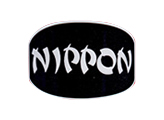Growing flowers for cutting
Growing your own flowers for cutting is easy and rewarding: they give you the opportunity to bring your garden into the house and to share it with friends and neighbours. You do not need a dedicated “cutting garden”, many annuals and perennials that produce wonderful cut flowers can be incorporated into beds and borders with shrubs and roses. Or why not introduce a few into the vegetable patch? They look good and you can pick when your harvest your produce.
The ideal situation
For best results choose nice open sunny positions away from the shade of buildings and overhanging trees; most annuals and perennials need plenty of direct sunlight to thrive. Also do choose a sheltered site where the flowers will not be buffeted by wind and weather. Make sure the planting site is free from weed at the outset and cultivate the ground well prior to planting or sowing. Most annual and perennial flowers grown for cutting need well-drained reasonably fertile soils. If sowing seed do not apply too much fertiliser prior to planting and in all cases avoid bulky organic manure and high-nitrogen fertilisers; these tend to stimulate too much leaf growth at the expense of flowers.
Seed or plants?
Most perennials are best grown from plants. Larger container grown plants which will produce several stems for cutting later in the year can be planted from mid-spring onwards. Water plants thoroughly prior to planting and be sure to incorporate a small handful of Vitax Q4 fertiliser in the planting hole and mixed in with the soil you use to backfill around the plants. Keep newly planted perennials well-watered until well established. Taller varieties may need support and grow-through supports or stout twigs are best put in place soon after planting rather than when the plants are well-advanced.
Annuals such as cosmos, clary, sunflowers, love-in-a-mist and larkspur are easily raised from seed, either sown directly in the planting positions, or started in pots and then planted out as young plants. Alternatively you may be able to buy young plants from a garden centre or nursery.
Choose the right subjects
It is all too easy to easy to get carried away buying lots of packets of seed, plugs and plant, far more than your space allows. Try and choose subjects that work together when cut and arranged: some small, light flowers and some bolder blooms in colours that work together. Choose flowers that you like and those that will work with the interior of your home. Try and choose subjects that flower for a long season; you will be amazed at the flower power of some easy-to grow subjects. Here are a few suggestions:
A few of the best from seed
Calendula, pot marigold. Lovely old fashioned cottage garden plant that looks good in the vegetable or herb garden. Good for cutting for informal arrangements. Choose orange varieties for strong vibrant colour that looks great with anything blue or purple. Hardy annual: sow seed direct in flowering position.
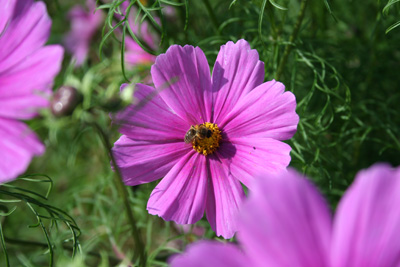 Cosmos. Delicate, tall annual with feathery foliage and large delicate flowers in shades from crimson to white. Seed can be sown directly in flowering position but often better sown indoors in pots and planted out in late spring.
Cosmos. Delicate, tall annual with feathery foliage and large delicate flowers in shades from crimson to white. Seed can be sown directly in flowering position but often better sown indoors in pots and planted out in late spring.
Nigella damascena, love-in-a-mist. Delicate annual with fine, fern-like foliage. Beautiful seed heads develop after the flowers. Pink, mauve, white and blue shades exist. Sow seed directly in flowering position. Good to sow amongst roses, perennials and shrubs.
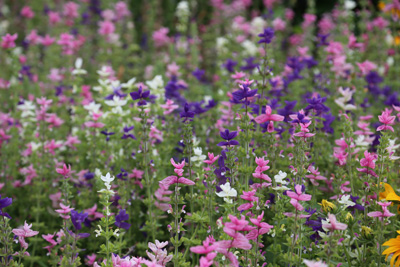 Salvia hormium, clary. Lovely annual with spikes of papery bracts in white pink and deep blue. Long-lasting in the garden and when cut. Sow directly in flowering position or start indoors and plant out. Will self-sow for future years on light soils.
Salvia hormium, clary. Lovely annual with spikes of papery bracts in white pink and deep blue. Long-lasting in the garden and when cut. Sow directly in flowering position or start indoors and plant out. Will self-sow for future years on light soils.
A few of the best perennials
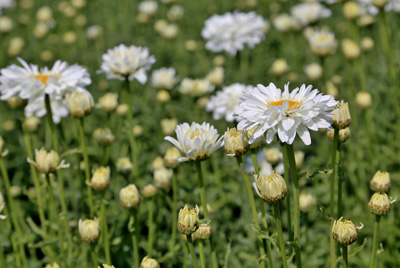 Leucanthemum maximum, Shasta daisy. Easily grown perennial with long-stemmed flowers are good in country bunches and for larger arrangements. Many new forms offer yellow and cream shades and double and fringed flowers. Buy named varieties as plants.
Leucanthemum maximum, Shasta daisy. Easily grown perennial with long-stemmed flowers are good in country bunches and for larger arrangements. Many new forms offer yellow and cream shades and double and fringed flowers. Buy named varieties as plants.
Echinacea, cone flower. The cone flower makes a wonderful cut flower both for its blooms and its seed heads. Many new colour forms exist in sunset shades, white and green. Buy as plants.
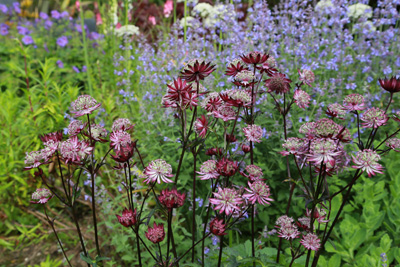 Astrantia, Hattie’s pincushion. A lovely perennial with upright stems rising from a mound of foliage. The papery, pincushion blooms are long lasting in the garden and when cut. Great for the front of the border; mixes well with roses, shrubs and other perennials. Buy as plants.
Astrantia, Hattie’s pincushion. A lovely perennial with upright stems rising from a mound of foliage. The papery, pincushion blooms are long lasting in the garden and when cut. Great for the front of the border; mixes well with roses, shrubs and other perennials. Buy as plants.
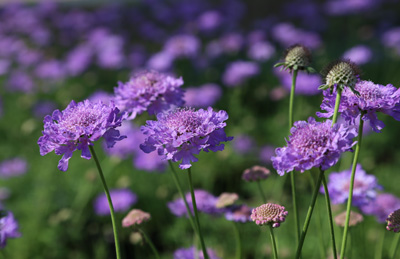 Scabiosa, scabious, pincushion flower. A good plant for a sunny spot on alkaline soil. Many varieties exist with different flower sizes. Very long lasting on the plant and as a cut flower. Buy plants.
Scabiosa, scabious, pincushion flower. A good plant for a sunny spot on alkaline soil. Many varieties exist with different flower sizes. Very long lasting on the plant and as a cut flower. Buy plants.
Aftercare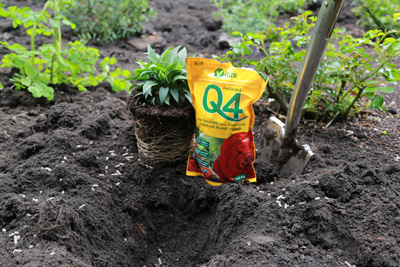
Remove faded flowers to encourage new ones to open. Water plants in dry weather. Remember that your plants are putting a lot into producing abundant blooms and they need to be well fed. A light application of Vitax Q4 fertiliser worked into the soil surface in mid-summer and watered in will supply all the nutrients they need to keep on blooming through the second half of the season.
Andy McIndoe for Vitax
Your login details have been used by another user or machine. Login details can only be used once at any one time so you have therefore automatically been logged out. Please contact your sites administrator if you believe this other user or machine has unauthorised access.







